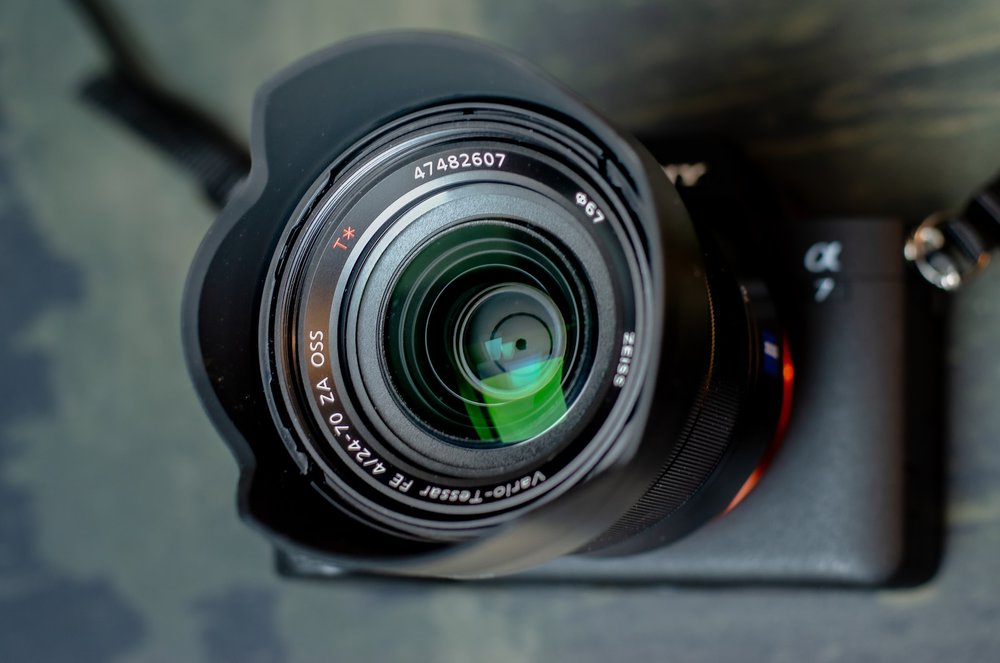Introduction to mirrorless cameras
In recent years, mirrorless cameras have gained significant popularity among photography enthusiasts. These compact and lightweight devices have revolutionised the way we capture images. But what exactly is a mirrorless camera? How does it differ from traditional SLRs? This comprehensive guide aims to demystify mirrorless cameras and provide valuable insights for those looking to explore this exciting technology.
What is a mirrorless camera?
A mirrorless camera, like the Sony A7III, or the Sony ZV-E1, is a type of digital camera that does not use a mirror mechanism like SLRs. Instead, it relies on an electronic viewfinder (EVF) or a live view on the rear LCD screen to preview and compose images. Without the bulky mirror and optical viewfinder, mirrorless cameras are significantly smaller and lighter than SLRs, making them highly portable and ideal for travel photography.
Advantages of mirrorless cameras over SLRs
Mirrorless cameras, including the Sony ZV-E10, offer several advantages over their SLR counterparts. Firstly, their compact size and lightweight design make them more convenient to carry around, especially for photographers who value mobility. They are also less intimidating, making them an excellent choice for street and documentary photography, where inconspicuousness is key.
Moreover, mirrorless cameras provide real-time exposure preview, allowing photographers to see the exact effects of different settings before capturing the shot. This eliminates the need for trial and error, resulting in more accurate exposures and reducing post-processing time. Additionally, mirrorless cameras often feature advanced autofocus systems that utilise phase detection or hybrid autofocus, resulting in faster and more precise focusing.
Understanding the difference between mirrorless and SLR cameras
To better understand mirrorless cameras, it is essential to comprehend the key differences between mirrorless and SLR cameras. The primary distinction lies in the absence of a mirror in mirrorless cameras. SLR cameras utilise a mirror that reflects light coming through the lens into an optical viewfinder, allowing the photographer to see the scene through the lens.
In contrast, mirrorless cameras capture light directly onto the image sensor, which then displays the image on the electronic viewfinder or rear LCD screen. This electronic viewfinder provides a digital representation of the scene, enabling the photographer to preview exposure, white balance, and other settings in real-time. Additionally, mirrorless cameras often have faster burst rates and silent shooting modes, thanks to their electronic shutters.
Key features of mirrorless cameras
Mirrorless cameras come with a range of features that enhance the photography experience. One of the most notable features is the ability to adapt various lenses from different manufacturers. Thanks to the shorter flange distance, mirrorless cameras can accommodate lenses designed for SLRs, rangefinders, and even cinema lenses through the use of adapters.
Another significant feature is the availability of in-body image stabilisation (IBIS). Unlike SLRs, where stabilisation is typically built into the lens, mirrorless cameras can stabilise any lens attached to the camera body. This provides photographers with the flexibility to use older lenses or third-party lenses without sacrificing image stabilisation.
Furthermore, many mirrorless cameras offer advanced video capabilities, including high-resolution recording, slow-motion, and even professional-grade codecs. This makes mirrorless cameras a versatile tool for both photography and videography enthusiasts.
Full frame mirrorless cameras: What you need to know
Full frame mirrorless cameras have gained particular attention among professionals and enthusiasts due to their larger image sensors. These sensors offer several advantages, including improved low-light performance, greater dynamic range, and shallower depth of field. If you are considering investing in a full frame mirrorless camera, there are a few crucial factors to consider.
Firstly, full frame mirrorless cameras tend to be more expensive than their APS-C or Micro Four Thirds counterparts. However, the investment can be worthwhile if you prioritise image quality and have a collection of full frame lenses. Additionally, full frame mirrorless cameras often have larger bodies to accommodate the larger sensor, which may not be as compact or lightweight as other mirrorless options.
It is also important to note that full frame mirrorless cameras may require investing in new lenses, as some lenses designed for SLRs may not be fully compatible. However, most manufacturers offer a wide range of native lenses specifically designed for their mirrorless camera systems, ensuring optimal performance and image quality.
Tips and techniques for getting the most out of your mirrorless camera
To make the most of your mirrorless camera, here are a few tips and techniques to consider. Firstly, take advantage of the electronic viewfinder to preview exposure and white balance in real-time. This allows you to make adjustments on the spot and achieve accurate results without relying solely on post-processing.
Experiment with different lenses and adapters to expand your creative possibilities. Mirrorless cameras offer the flexibility to mount various lenses, including vintage lenses with unique characteristics. Adapters can also be used to adapt lenses from other camera systems, opening up a world of possibilities without having to invest in an entirely new set of lenses.
Finally, explore the video capabilities of your mirrorless camera. With features like 4K recording and high frame rates, mirrorless cameras can produce stunning videos. Experiment with different shooting techniques, such as time-lapse, slow-motion, and cinematic techniques, to take your videography skills to the next level.
Conclusion
In conclusion, mirrorless cameras have become a game-changer in the world of photography. Their compact size, advanced features, and image quality have attracted photographers of all levels. Understanding the key differences between mirrorless and SLR cameras, as well as the advantages they offer, is crucial to making an informed decision when choosing a camera system.
Whether you opt for a full frame mirrorless camera or a more affordable APS-C or Micro Four Thirds option, the world of mirrorless photography awaits with endless creative possibilities. Embrace the convenience, versatility, and technological advancements that mirrorless cameras bring, and embark on a journey of capturing stunning images like never before.
Carol
Information sourced by the author for luxuryactivist.com. All content is copyrighted with no reproduction rights available. Images are for illustration purposes only.
This story originally appeared on Luxuryactivist

